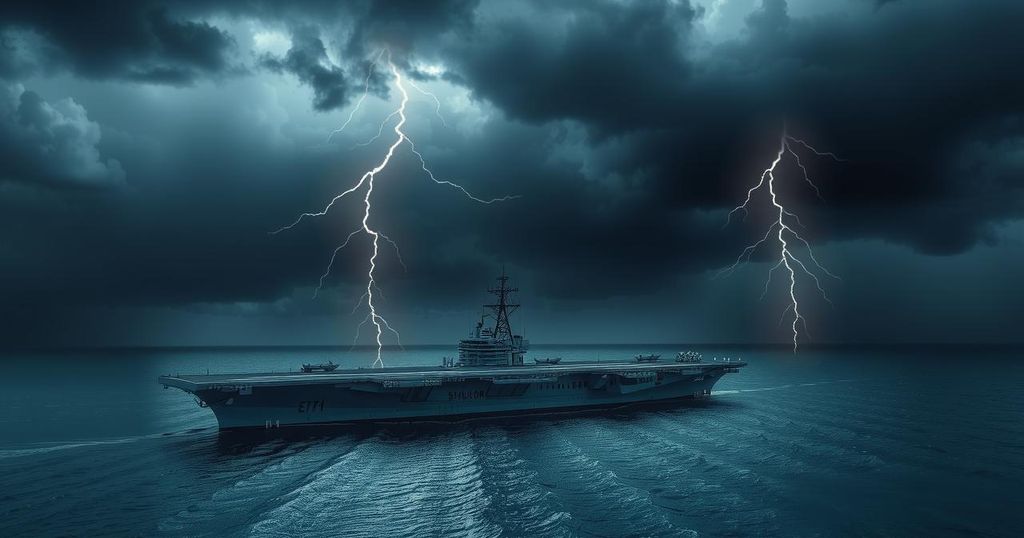Navigating U.S.-India Maritime Cooperation: Challenges and Opportunities in the Indian Ocean
The United States and India have strengthened their maritime partnership significantly in recent years, particularly to counter China’s influence in the Indo-Pacific. Historical ties illustrate fluctuating support and strategic objectives, including maritime security and access. Future U.S.-India relations hinge on defining mutual expectations, particularly as new political dynamics emerge. Policymakers must adapt strategies to consider possible shifts in India’s stance towards U.S. operations in the Indian Ocean.
The United States and India have significantly strengthened their maritime partnership over the past decade, with bipartisan support from U.S. leadership. This cooperation is particularly evident following Prime Minister Narendra Modi’s recent visit to Washington, suggesting a continued robust security relationship into the second Trump administration. The U.S. has long aimed to position India as a key ally to counter China’s influence in the Indo-Pacific region, focusing on security burden-sharing initiatives ranging from basic maritime support to advanced military collaboration.
In the context of U.S.-India cooperation, the future may bring new possibilities for military support during potential crises, although many experts believe direct assistance in combat scenarios might be unlikely. Alternatives for enhancing defense technology and operational interoperability should be explored to maintain and strengthen bilateral relations without overstretching expectations. Nonetheless, it is critical to acknowledge alternative scenarios, such as a potential rejection of U.S. presence by India, as this possibility warrants consideration during strategic planning.
Historically, while the U.S. has not maintained territory in the Indian Ocean, it has consistently recognized the significance of this region for its security interests. The Cold War prompted the U.S. to rely on regional alliances for security, particularly with the United Kingdom, until its withdrawal forced the U.S. to seek new relationships. The free flow of maritime commerce has remained a priority for U.S. policy, particularly in light of events like the Iranian hostage crisis and the Soviet invasion of Afghanistan.
Additionally, maintaining military access and basing in the Indian Ocean has been crucial to U.S. security strategy, especially in response to crises in the Middle East. The establishment of Central Command and naval forces in Bahrain underscores America’s long-standing commitment to ensure military readiness in the region. Disputes pertaining to military bases, such as the ongoing debate over the Chagos Islands, highlight the complexities of maintaining a U.S. presence in collaboration with regional partners, including India.
The history of U.S.-India relations in the maritime domain reflects periods of both cooperation and divergence, particularly during the Cold War. Instances such as opposing views on the Bangladesh independence crisis and naval access to Sri Lanka illustrate past tensions. However, since Prime Minister Modi’s election, the strategic security relationship has expanded significantly. Even so, future uncertainties loom regarding India’s perspective on U.S. operations in the Indian Ocean, especially as Modi approaches retirement and potential shifts in policy arise.
As the second Trump administration formulates its strategy toward the Indian Ocean, India remains a central player. The recent positive dialogue between Trump and Modi indicates a commitment to continued collaboration, but a clear alignment of expectations between the two countries is essential to mitigate risks. Future U.S. strategy must explicitly define objectives and consider adverse potential futures that India might pursue, ensuring that strategies align with changing geopolitical realities.
The importance of U.S.-India collaboration in security is underscored by the necessity for thoughtful risk assessment concerning military support. Questions regarding the extent of U.S. involvement in India’s regional defense strategies, as well as costs and benefits of this support, warrant thorough examination. Schooled in historical lessons, U.S. policymakers must balance objectives within the Indian Ocean alongside broader strategic imperatives that also involve the Arctic, Atlantic, and Western Pacific.
In conclusion, the maritime partnership between the United States and India is poised for further growth, emphasizing the complexities of security burden-sharing. While historical contexts inform contemporary strategies, U.S. policymakers must remain mindful of potential shifts in India’s disposition toward U.S. presence and operations. A well-defined strategy that articulates mutual expectations and considers future scenarios will be essential for sustaining this critical alliance amidst evolving regional circumstances in the Indian Ocean.
Original Source: perryworldhouse.upenn.edu








Post Comment